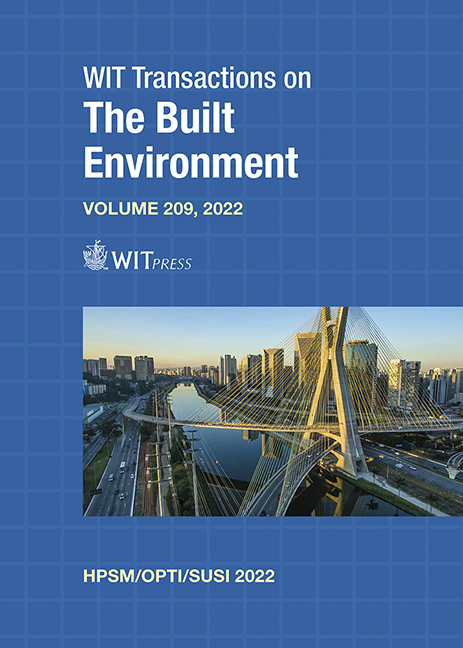FULL-SCALE REINFORCED CONCRETE SLABS WITH EXTERNAL REINFORCED POLYMER: FIELD TEST AND NUMERICAL COMPARISON
Price
Free (open access)
Transaction
Volume
209
Pages
13
Page Range
129 - 141
Published
2022
Paper DOI
10.2495/HPSU220121
Copyright
Author(s)
RICARDO CASTEDO, ANASTASIO P. SANTOS, CARLOS REIFARTH, MARÍA CHIQUITO, LINA MARIA LÓPEZ, ALEJANDRO PÉREZ-CALDENTEY, SANTIAGO MARTÍNEZ-ALMAJANO, ALEJANDRO ALAÑÓN
Abstract
Numerical simulation of reinforced concrete (RC) slabs with the addition of an external reinforced polymer (FRP) have been developed and compared with full scale real tests. The size of the slabs was 4.4 x 1.46 m, with a span of 4 m, and a thickness of 15 cm. The slabs were built using concrete of class C25/30, and B500C reinforcing steel. Seven tests were conducted, one at a scaled distance of 0.83 m/kg1/3, three at a scaled distance of 0.42 m/kg1/3, and three at 0.21 m/kg1/3. For the biggest scaled distance, the slab had no extra reinforcement. In the other two cases one of the slabs had no extra reinforcement, while the other two tests were performed with carbon fibre reinforcement (CFRP) and E-glass fibre reinforcement (GFRP) located on the face opposite to the blast. Numerical simulation was performed with LS-DYNA software. The study elements (concrete, steel and reinforcement) have been simulated in a Lagrangian formulation with solid elements, beam elements and shells, respectively. Three concrete models have been used and compared: CSCM, MAT72-R3 and RHT. As for the explosive, the CONWEP-based Load Blast Enhanced (LBE) card was used. Reinforcement with CFRP resulted in a generally reduced damage area on both surfaces. All models show a good correlation with the test results and a non-destructive damage estimation technique when comparing them in terms of damage area.
Keywords
LS-DYNA, blast tests, non-destructive technique, CSCM, RHT, LBE





